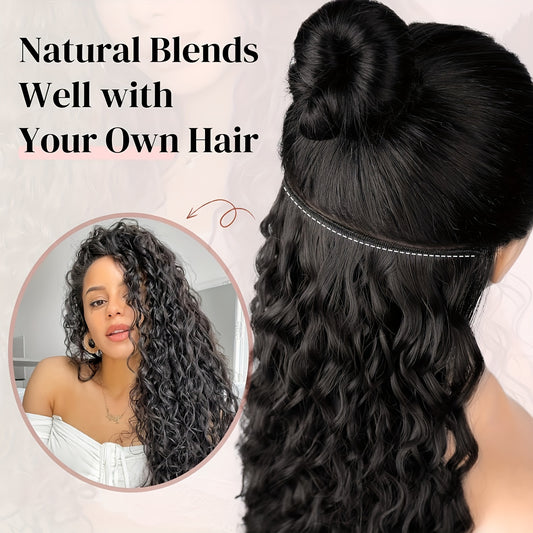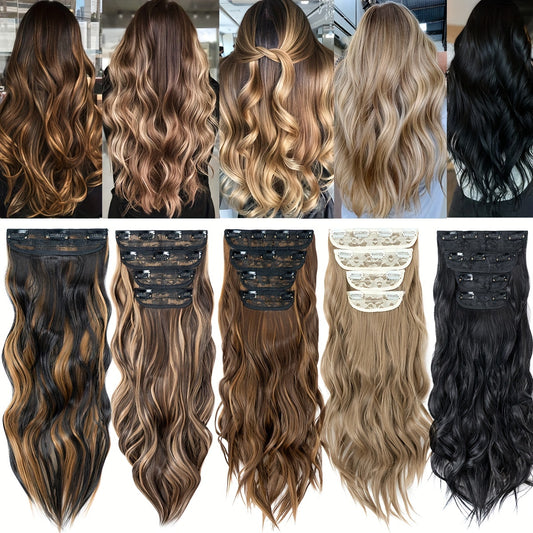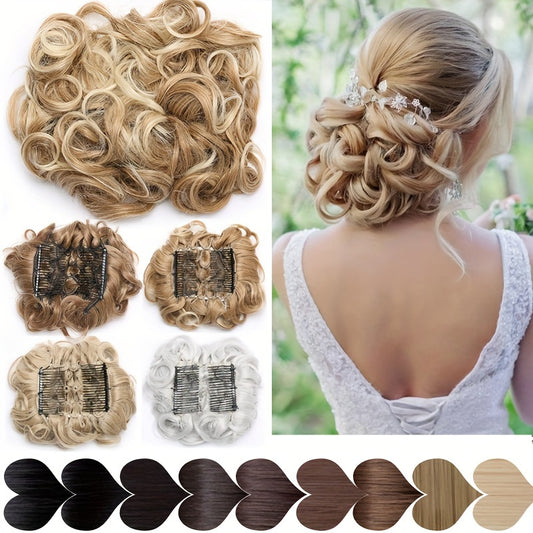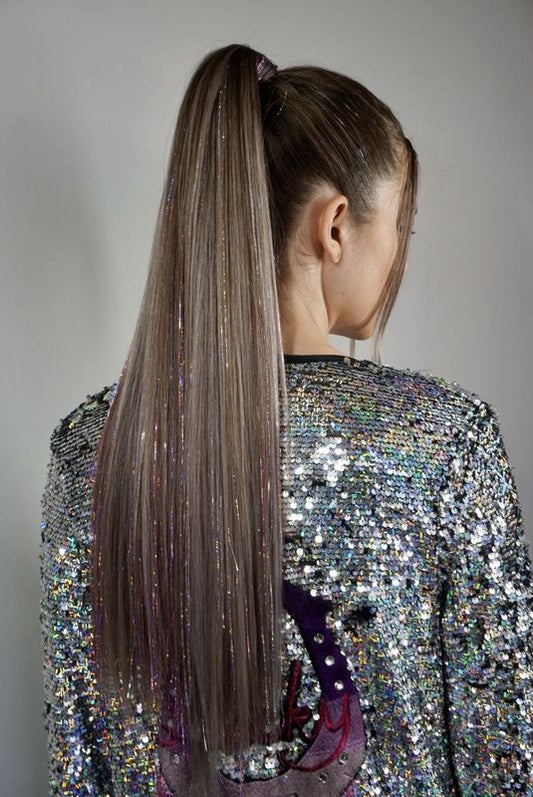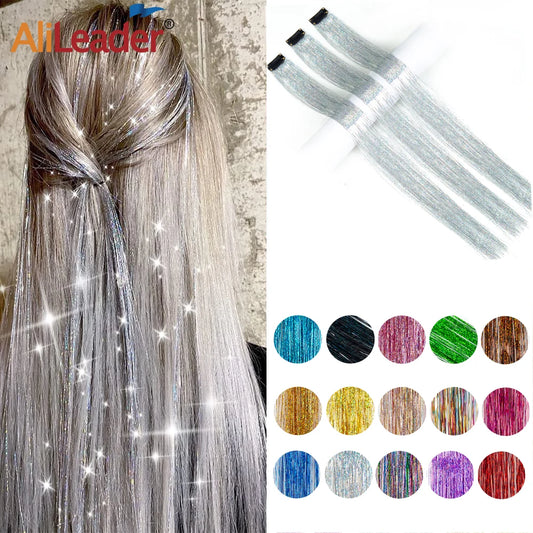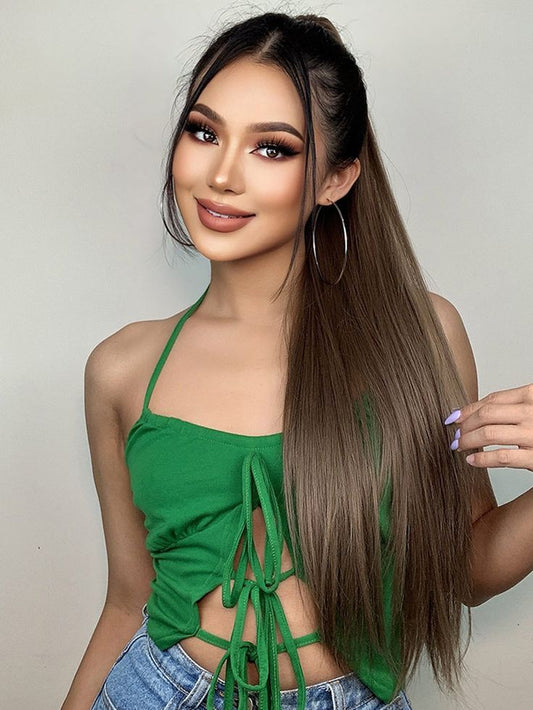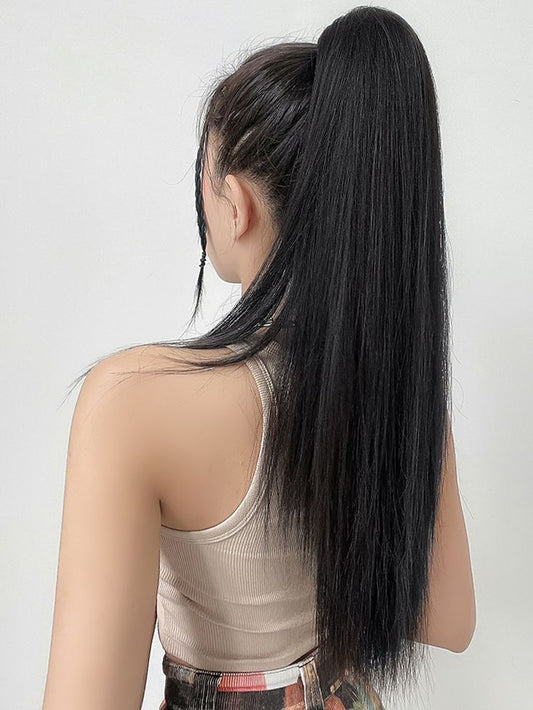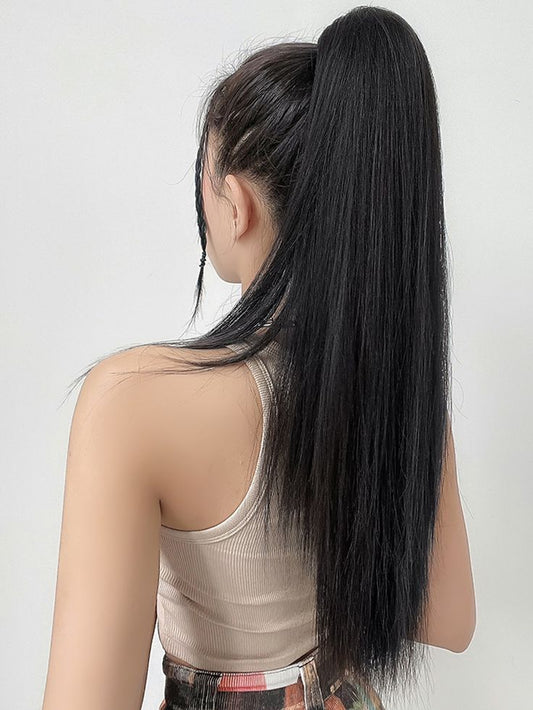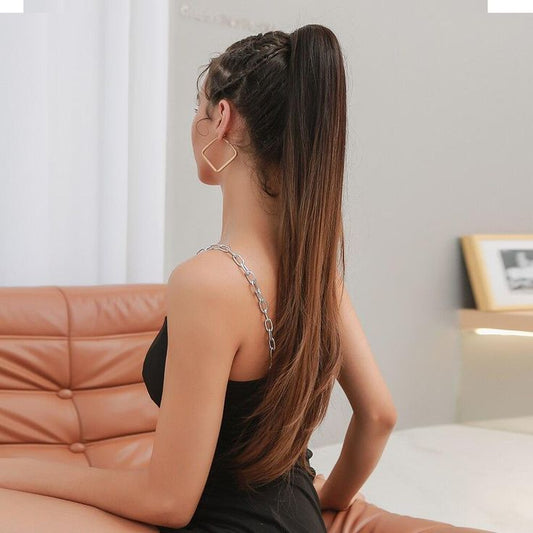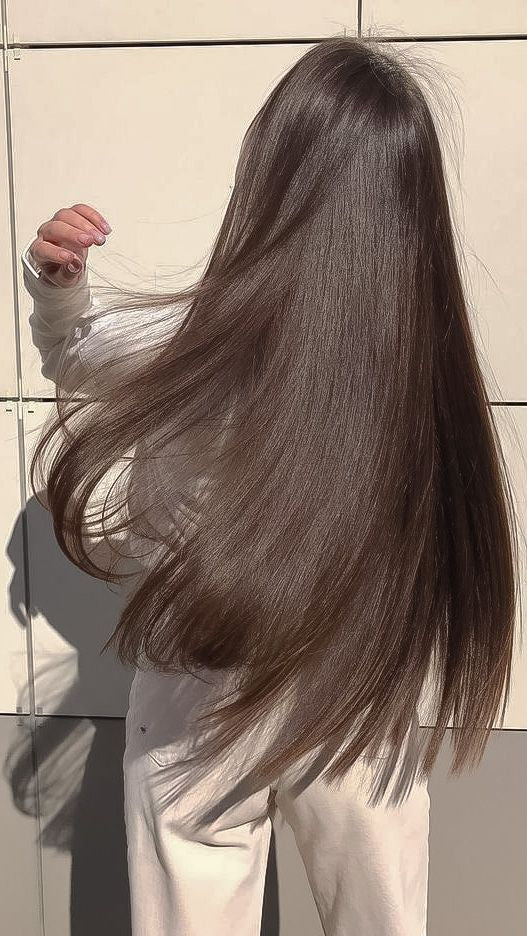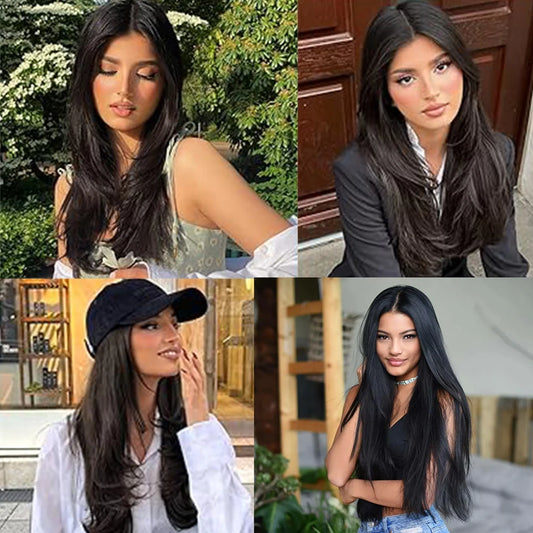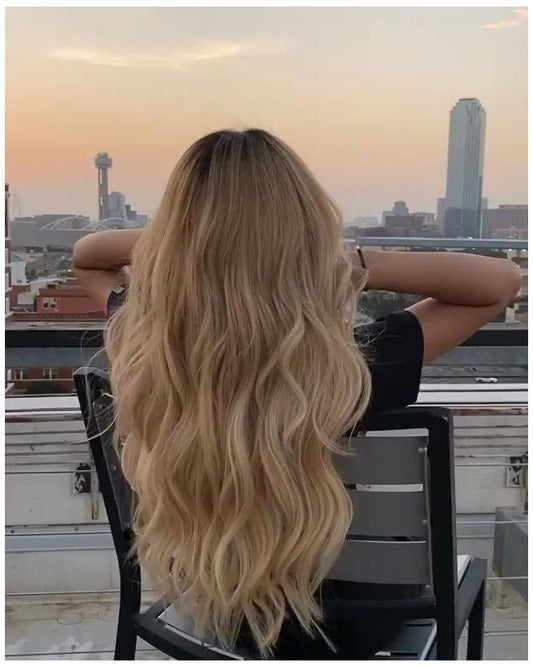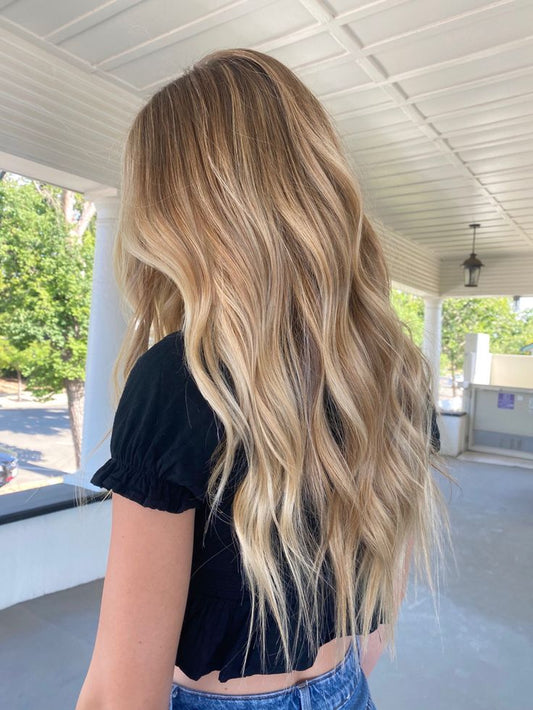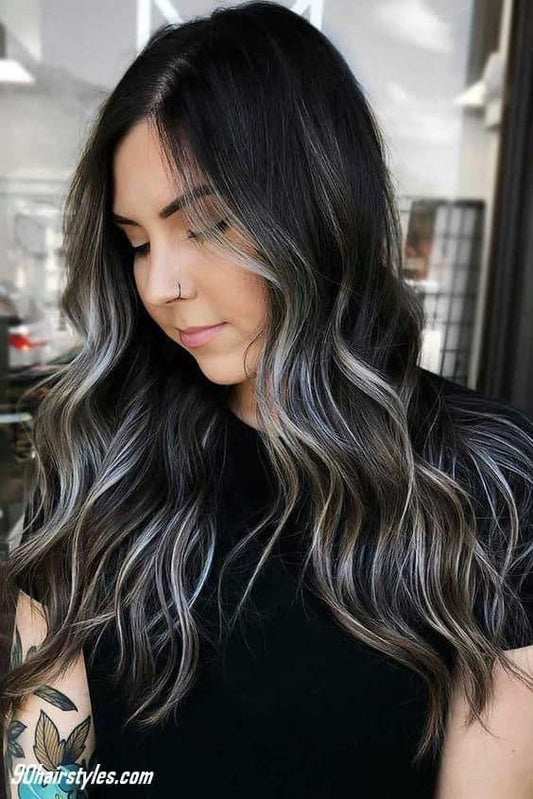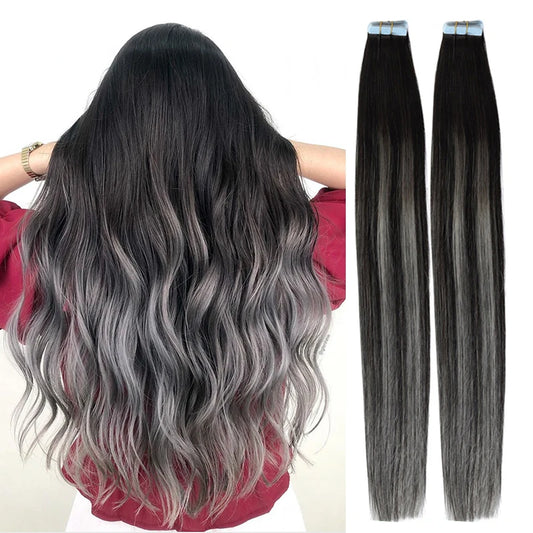Ombre Hair Extensions
The Ultimate Gradient Hair Playbook For Real Life
Ombre hair extensions are more than a fleeting trend; they are a practical, creative, and confidence-boosting way to wear dimension, depth, and shine without surrendering your hair’s health or your schedule. This long-form guide has one job: to make your ombre journey crystal clear from the first spark of inspiration to the last polished curl before you step out the door. You’ll learn how ombre differs from balayage, how to choose tones that flatter your undertone, how to pick the right length and weight for seamless blending, and how to style, maintain, and future-proof your extensions so they serve you through seasons, events, and mood swings. You’ll also find pro application strategies, smart-care routines, and a realistic cost-of-ownership breakdown to help you shop strategically. By the end, you’ll be able to design a capsule hair wardrobe tailored to your lifestyle—one that lets you shift from understated polish on Monday to dramatic glam by Friday without a single drop of bleach touching your natural hair. And yes, everything here is written to be readable, actionable, left-aligned, and optimized with natural, non-spammy SEO phrases like ombre hair extensions, clip in ombre hair, balayage extensions, and tape in ombre—all woven lightly so the content remains human, helpful, and easy to scan. What Ombre Actually Is And Why It Works On Everyone
Ombre is a deliberate “light-to-dark” or “dark-to-light” gradient that moves from the roots to the ends in a smooth tonal transition. The visual effect creates instant depth and dimension because the eye reads the shade shift as volume and movement. Unlike full-head dye jobs that can flatten the hair’s look, ombre plays with light—darker areas recede, lighter areas pop—so even fine or straight hair appears fuller. The style originated from the French word meaning shadow; that shadowing is exactly why the look reads luxe and deliberate rather than “grown-out.” With extensions, you get the gradient without committing to a chemical process: no bleach burn, no overlapping toner, no breakage spiral. You clip in, tape in, or install wefts, and you’re ready.
Ombre Vs Balayage Vs Highlights The Real Differences You’ll See In Photos
Highlights are individual lighter strands placed throughout the head to break up a single color; balayage is a painting technique that places brightness where the sun would naturally hit; ombre is a root-to-tip gradient with a clear tonal journey. All three can co-exist, but their personalities differ. Balayage whispers; highlights sparkle; ombre makes a statement—especially in photos and video. If you like strong visual storytelling and obvious dimension that still looks expensive, ombre wins. If you want “I woke up like this” softness, balayage-laced extensions are your vibe. And if you crave sparkle around the face or at the part, use a few highlighted pieces near your hairline along with your ombre set for next-level depth.
The Five Biggest Reasons Ombre Extensions Beat A Salon Dye Job
First, zero chemical damage: no lifting, no compromised cuticles, no moisture crisis. Second, instant gratification: the transformation takes minutes instead of hours in a chair. Third, modular freedom: try ash-to-vanilla one week, caramel-to-honey the next, then silver-to-ice for a night out—no fading period or color correction needed. Fourth, budget logic: a single quality set replaces repeated pricey sessions. Fifth, root realism: because the root stays deeper, blending with your natural hair is easier, and regrowth is never a concern.
A Tour Of Popular Ombre Families And The Personalities They Project
Classic brunette-to-blonde ombre is a boardroom-to-brunch classic; the richness at the root telegraphs polish while the bright ends feel flirty and free. Ash ombre leans editorial—think cool, slatey tones that love structured tailoring, matte makeup, and minimal jewelry. Caramel melts radiate warmth and look glowing in golden-hour selfies; honey ribbons flatter olive and medium skin especially well. Smokey silver-to-pearl says futuristic glam and pairs beautifully with monochrome outfits. Rose-beige (“blush bronde”) is the soft-focus filter of hair: subtle, chic, and incredibly photogenic. Jewel ombre (sapphire, amethyst, emerald) reads creative without feeling costume-y when the gradient is refined. Pastels are weekend-playful and surprisingly wearable when the fade is gentle.
Reading Your Undertone And Matching Ombre Like A Stylist
Undertone is the quiet dial behind every shade decision. If your veins look greenish and gold jewelry flatters you, you likely skew warm; choose honey, caramel, warm beige, and buttery blondes. If your veins look blue or purple and silver jewelry sings on your skin, you’re cool; ash, pearl, icy beige, and smoked taupe are your home base. Neutral undertones can borrow from both sides—soft champagne (a warm-cool blend) is a superstar. When in doubt, don’t chase your favorite influencer’s shade—audition swatches in natural daylight against your cheek. The right ombre will make your skin look more even, your eyes brighter, and your lip color suddenly “right.”
Choosing Length And Weight So The Blend Disappears
Length determines the drama; weight (grams) determines fullness. Short and sweet (10–14 inches) hints at a late-’90s chic bob or lobs that skim the collarbone—ideal for first-time wearers or minimalists. Mid-length power (16–20 inches) is the everyday all-rounder: ponytails, braids, updos, and half-ups all read fuller. Statement lengths (22–26 inches) deliver a head-turning cascade and the most visible gradient; waves on these lengths look cinematic. If your hair is fine, 120–160 grams is usually enough for daily wear without strain. Medium hair loves 160–200 grams. Thick or blunt hair often blends best with 200–240 grams. The rule: match the density of your ends. If your natural cut is blunt, a heavier set or a quick feathering snip by a stylist will erase the telltale break between hair and extensions.
Picking Your Method Clip Ins Tape Ins Wefts And Why They All Have A Moment Clip-ins are the wardrobe heroes—on in minutes, off at night, zero commitment. They’re perfect for photoshoots, events, or daily expression when you like variety. Tape-ins feel weightless and sleek for multi-week wear; the tapes sit flat and distribute weight evenly, ideal if your hair is medium to thick and you want shower-and-go convenience. Weft and weave installs are the long-game option for people who prefer a salon-maintained, durable approach; they give the most customizable density and are great for very thick or very curly textures. Ponytail attachments are the secret weapon for clean-girl slick buns, high ponies, and “I changed my hair in five minutes” days. Many curated shops (including category menus that highlight “Ombre Hair Extensions,” “Ombre Tape-in Hair Extensions,” and a range of lengths from 10 inch to the mid-20s) make it easy to match your preferred method and length with gradient shades, alongside options like clip-in, seamless, double-wefted and curly variants, as well as sibling balayage categories such as Chestnut Honey, Soft Bronze, Dark Espresso Melt, Silver Shadow and Ash Black when you’re exploring softer paint-like fades.
The Seamless Blend Blueprint Parting Placement And Personalization
Part along your usual line and section horizontally from ear to ear for your first weft. Place your largest wefts low enough to give length without peeking through your top layers. For clip-ins, tease lightly where clips will sit if your hair is silky so they anchor. For tape-ins, a stylist will section clean rows and “sandwich” your hair between tapes so they lay flat. Always step back from the mirror between rows and check the silhouette from the side; you’re sculpting a 3D shape, not just adding hair. If your ends are blunt, ask for micro-feathering: a stylist nips into the extensions’ last inch on a diagonal to blur the seam. Face-framing wefts can be trimmed to mimic curtain bangs; side parts love a shorter weft near the temple so the gradient starts softly around the cheekbone.
Heat Styling Without Heartbreak Temperatures Tools And Timing
Always spritz heat protectant; it’s the insurance that keeps fibers glossy. For human-hair extensions, keep irons in the 160–185°C (320–365°F) range for most textures; finer fibers curl beautifully at the low end while coarser hair might prefer the mid range. Curl away from the face for that airy, editorial bend. Let each curl cool in your palm before you drop it—this “memory” sets the shape so it lasts without excessive heat. When you want the gradient to shout, style in looser S-waves that reveal more length; when you want a whisper, brush out curls with a soft boar bristle to lift shine and blur the transitions.
The Everyday Style Index Waves Sleek Braids And Updos That Show Your Gradient
Airy beach waves amplify ombre because the lighter ends catch light at every curve; mist a lightweight texture spray for grip. Sleek and straight reads luxury: run a shine serum just on the mid-lengths to ends to avoid flattening the root. Rope braids and fishtails are ombre’s favorite playground because each cross reveals the fade like marbling. Half-up bows, claw-clip swoops, and soft chignons let you display depth at the back while keeping hair off your face. For the high-pony switch-up, gather hair first, then clip wefts upward so the clips face the crown—this hides the base and keeps the gradient continuous.
Water Care The Wash Routine That Preserves Color And Slip
Extensions don’t live on your scalp, so they don’t get oily at the same pace. Wash only when they feel product-heavy or dulled—typically every 15–20 wears for clip-ins and on your stylist’s schedule for tapes or wefts. Detangle gently from ends upward before wetting. Use lukewarm water, sulfate-free shampoo, and a light, silicone-friendly conditioner on mids to ends. Rinse thoroughly. Press—not rub—excess water with a microfibre towel. Lay wefts flat on a towel to dry or hang them so air flows around them. A tiny drop of lightweight argan or camellia oil on dry ends resurrects shine without weight.
Storage Habits That Add Months To Your Set
Keep clip-ins in a satin bag or a dedicated storage hanger to prevent tangling. Before storing, make sure they’re fully dry and softly brushed. For travel, coil wefts into a loose “O,” tuck into a soft pouch, and place them in the middle of your suitcase sandwiched by clothes; the structure prevents crushing. Store away from direct sun—UV fades even salon tones over time.
Scalp Health Comfort And Traction-Safe Wear
Comfortable extension wear starts with even weight distribution. Rotate the placement of your clip-ins slightly each day so the same tiny area of scalp isn’t carrying all the load. If a clip ever pinches, move it; there’s no trophy for endurance. Tape-ins must be applied cleanly and not too close to the scalp so they can flex with your head’s natural movement. If you feel tightness, speak up during the appointment—the best installs are the ones you forget you’re wearing after five minutes.
Color Theory For Ombre How Tone, Depth, And Chroma Compose The Look
Depth is how light or dark the shade is; tone is the warmth/coolness; chroma is the intensity. Balance all three across the gradient. A cool root with a warm end can work—but bridge them with a neutral mid so the jump doesn’t read stripey. If your end shade is very high-chroma (think vivid copper), match the root depth closely to your natural color so the blend feels plausible. For soft elegance, keep chroma lower and let depth do the sculpting. For editorial drama, increase chroma on the ends and add glassy shine so the fade glows on camera.
Face Shape Mapping So Your Ombre Flatters Your Bone Structure
Round faces thrive on vertical length and a slightly deeper top; keep the brightest pieces below the chin to elongate. Square faces love face-framing that curves around the jaw’s corner so the eye travels in an arc. Heart shapes look dreamy with brightness from mid-length downward and airy volume at the sides to balance the forehead. Oval faces can wear almost anything but often look extra refined with a shadowed root and pearly ends that begin mid-cheek.
Texture Pairings Straight, Wavy, And Curly Ombre That Looks Intentional
Straight hair showcases the precision of a clean gradient; go for stick-straight glass hair when you want sophistication. Wavy hair romanticizes ombre; the bounce and bend make color look alive. Curly hair makes ombre look sculptural; the gradient appears within the curl pattern itself, which is gorgeous in updos. If your natural pattern differs from your extension’s pattern, heat set everything to the same wave or curl before blending—you want the color story and the texture story reading in harmony.
Building Your Capsule Hair Wardrobe The Four Pieces That Do Everything
Start with a daily driver set (mid length, medium density) in your best neutral ombre—this is your 80% use case. Add a statement length for events and photoshoots. Add a ponytail piece for fast transformations. Finally, add a fantasy or seasonal shade for creative days (rose-beige for spring, gold-kissed caramel for summer, taupe-ash for winter). With those four, you can create endless looks by mixing curls, braids, and updos without owning a dozen sets.
Event Playbook Bridal, Black-Tie, Festivals, And Workdays
Bridal ombre with soft-gloss curls is universally flattering; anchor with hidden bobby pins, mist with a flexible spray, and tuck a comb or veil above a seamless row for security. Black-tie nights love sleek center parts with polished ends; a silky stick product or very light gel on top hair removes flyaways on camera. Festivals are for braids: crisscross, bubble, and infinity braids showcase color best; finish with a nourishing mist to keep ends touchable through the day. For office polish, a smooth blowout and low twist chignon lets your gradient peek through the knot for understated luxury.
Photo And Reels Strategy Posing, Lighting, And Composition For Hair That Pops
Indirect window light is your best friend; stand side-on to the source so the gradient reads from root to tip. Lift hair slightly at the crown with your fingertips before the shot to avoid a flat silhouette. For video, do a slow head turn and a gentle hair flip to showcase the fade; ombre thrives in motion. Frame mid-torso upward so the hair is the hero; neutral clothing colors allow the tones to sing.
Caring For Human Hair Extensions The Product Capsule That Actually Gets Used
You don’t need a chemist’s shelf. A sulfate-free shampoo, a light conditioner, a heat protectant, a flexible finishing spray, and a tiny bottle of lightweight oil will take you through 95% of scenarios. Skip heavy masks that can weigh down wefts. If you love leave-in conditioners, atomize lightly and comb through so the product distributes evenly; clumps cause stringiness.
Troubleshooting The Seven Most Common Blend Issues
If your ends look too thin compared to the extensions, you need either more grams or micro-feathering at your baseline. If your roots look puffy over flat tapes, your installer likely set them too close to the scalp—have them adjusted so they can hinge. If clips slip, add a light teasing cushion or use a grip powder. If the gradient looks “blocked,” curl alternating directions and brush out; movement breaks up flat panels. If the ends look frizzy, you’re either overheated or under-conditioned—lower your tool temp and add a pea of oil once cool. If a weft shows when you lift your arms, move that row half an inch lower or use a shorter piece in that area. If shine disappears on camera, finish with a silicone mist, then blot once with tissue so it looks glossy, not greasy.
Grain-Of-Salt Myths That Keep People From Trying Ombre Extensions
Myth: ombre only suits long hair. Reality: jaw-length bobs with a soft melt look French and fresh. Myth: ombre requires thick hair. Reality: carefully placed density on fine hair creates the illusion of fullness. Myth: extensions always damage hair. Reality: poor application or over-wear causes issues—gentle removal, scalp breaks, and correct weight prevent them. Myth: cool tones wash people out. Reality: the right root depth and a balanced midshade keep cool ends flattering; makeup harmony (a rosy lip, a hint of highlight) completes the look.
Budgeting Smartly Real Costs, Not Just Prices
A quality human-hair ombre set costs more upfront than a fast-fashion synthetic, but it outlasts and outperforms. Compare that to recurring salon blonding: lifts, toners, bond builders, trims, and glosses add up quickly. Over six months, a premium set frequently wins, especially if you rotate it with your natural hair days. Add in the value of flexibility—work appropriate during the week, glam at night—and the price-per-wear drops dramatically.
When To Add A Second Shade And How To Layer Without Looking “Extra”
If you have a complex natural color (for instance, deeper ash at the base with warm midlengths), stacking two extension sets—one neutral ombre and one slightly warmer—can simulate true multi-tonal hair. Wear the neutral underneath for believable shadow, and add a few pieces of the warmer set around the mid-sections and ends for nuanced dimension. The trick is restraint: fewer, smarter pieces placed where the sun would hit.
The Seasonal Ombre Calendar Updating Your Look Without Starting Over
Spring loves brightened neutrals: think beige-to-champagne. Summer soaks up honeyed caramel and sunkissed bronde; pair with tousled waves. Autumn leans into spiced tones—maple, chestnut, and cinnamon melt—paired with glossy blowouts and bouncy ends. Winter is the home of ash, pearl, and smoked silver; sleek styles and glass hair feel editorial and fit with coats and high collars. Rotate within your capsule so you’re never bored.
Maintenance Timeline For Clip Ins, Tapes, And Wefts
Clip-ins live forever if you treat them like silk scarves—wear, brush, air-dry, store; wash only when needed. Tape-ins typically require a salon refresh every 6–8 weeks to move the tapes downward as your own hair grows; the move-up appointment is a chance to rebalance placement and trim ends. Sewn wefts need tightening on a similar cadence depending on your growth rate. A mini trim every few months keeps the ends immaculate and the gradient crisp.
Ethics, Sourcing, And Conscious Beauty
The modern extension journey includes caring where your hair comes from. Choose sellers who value quality control, consistent processing, and respectful sourcing. That diligence shows up in the way the hair behaves—cuticle alignment, longevity, and how the gradient shade holds its tone after washing. When your beauty choices reflect your values, you wear them with more joy—and you treat them better. That’s a virtuous cycle: ethical choices, beautiful results, longer life span.
How To Shop With Intention And Avoid Analysis Paralysis
Begin with your undertone match and your lifestyle frequency—how often will you wear them? Pick a neutral ombre for your base set at a length you can manage daily. Match grams to your natural density. Decide on your method (clip-in for flexibility, tape-in for convenience, wefts for custom density). Then add one “joy” piece: a ponytail, a fantasy shade, or a longer length. You’ve now built a rationale around your look rather than chasing every pretty swatch.
A Word On Quality Indicators So You Don’t Learn The Hard Way
Look for consistent weft stitching, secure clips, and smooth tape tabs that don’t snag. Evaluate the gradient: quality ombre should have a “diffusion zone,” not a sharp line. Run a comb through a new set—snagging at the mid-shaft can signal rough processing. Smell matters; an overly chemical scent that lingers after a rinse can indicate harsh treatment. Great hair feels soft when dry, holds a curl, and returns to a silky state after brushing out.
Why A Brand With Breadth Helps You Get It Right
A thoughtful storefront makes shopping less overwhelming: clear “Shop by Hair Length” menus (from short to statement), “Shop by Type of Extensions” filters for clip-ins, seamless doubles, curly variants, and “Shop by Ombre & Balayage Shades” groupings that let you visualize gradients side by side. You can even hone in on “Ombre Tape-in Hair Extensions” if you prefer semi-permanent installs, explore specific ombre codes, or jump across to sibling balayage series like Chestnut Honey, Soft Bronze, Dark Espresso Melt, Silver Shadow, and Ash Black to compare finishes before committing. This kind of navigation makes it far easier to select a method, length, and tone in one sitting, then return later for add-ons like ponytails or bangs when you’re ready to expand your capsule.
From Box To Blend Your First-Wear Walkthrough
Open the set and separate wefts by size. Brush your natural hair and create your baseline section at the occipital bone (the bump at the back of your skull). Clip your top hair out of the way. Place your largest weft so it sits flat; press each clip until you hear the soft “click.” Drop a thin veil of your hair over the row. Continue stacking rows upward, using shorter wefts as you approach the crown. At the sides, place narrower pieces so the gradient curves around your face. Curl everything together in large, alternating sections. Let cool. Brush down with a soft paddle. Adjust the front pieces so the lightest tones start where you want attention—usually near the cheekbones.
Safe Removal And Night Routine That Loves Your Scalp
For clip-ins, press each clip to release before gently sliding out; never yank. For tapes, let a technician dissolve the adhesive with salon solutions so your natural hair stays happy. Before bed, braid your hair loosely to keep it smooth and avoid friction. If you wore clip-ins during the day, store them; never sleep in them—nighttime is your scalp’s rest window.
What Makeup And Wardrobe Do To Ombre Without You Realizing
A soft pink or caramel lip suddenly harmonizes the whole look; a wash of champagne on the lids reflects ombre ends; a tiny touch of bronzer warms a cool gradient so it looks lived-in. On the wardrobe side, monochrome outfits make hair the lead actor. Chunky knits love caramel ombre; sharp blazers love ash melts; satin slips love pearl ends. If you’re ever unsure, put on a neutral top and take two mirror selfies—one with hair forward over the shoulders, one back; see which presence you prefer for the day.
Longevity Hacks Small Habits With Big Payoff
Switch up your part occasionally to reduce wear points. Use a silk pillowcase even on nights you don’t wear extensions; it benefits your natural hair so the blend looks cleaner. Keep a pocket comb in your bag to tame wind-mussed ends; two strokes returns the finish to “salon.” Travel with a tiny decant of heat protectant and a travel-size brush—hotel irons run hot, and it’s easy to overdo it.
When You’re Growing Out A Cut And Need Patience On Tap
Ombre extensions are a miracle during grow-out. If you’re moving from a blunt bob to a below-the-shoulder length, a mid-weight, mid-length set will bridge the awkward phase. Ask a stylist to micro-feather your natural hem and the extension ends together; you’ll gain six months of “looks intentional” time while your real hair catches up.
Confidence, Identity, And Why Hair Changes Feel Bigger Than They Look
Hair is a story we tell about ourselves without speaking—playful, powerful, romantic, refined. Because ombre is inherently layered, it mirrors the layered selves you carry: 9 A.M. strategist, 7 P.M. dinner-date wit, Saturday morning cozy human with coffee in hand. Extensions say you can be all of those without negotiating with bleach, time, or permanence. Whether you want promotion-day polish or festival sparkle, you can slip it in and step into character—your character.
Future-Proofing Your Kit Re-Toning And Reviving Shine
Over months, even well-processed hair can shift tone slightly as products, sun, and heat interact. To keep cool ombre ends from drifting brassy, use a very gentle violet wash as needed—never soak; a quick suds and immediate rinse is plenty. To wake up dull warm ombre, try a clear gloss or a warm-beige glaze applied lightly to extension ends only, followed by a deep rinse and air-dry. Always test strand first.
Where This Fits In A Style-First, Time-Smart Life
The bigger picture isn’t just looking good—it’s reclaiming time, avoiding damage, and getting modular control over your look. One quality ombre set can be “quiet luxury” on Monday, “center-stage glam” on Friday, and “effortless off-duty” on Sunday. It lets your hair match your calendar and your mood, not the other way around. That’s the heart of modern beauty—adaptable, responsible, and personal.
A Quick Brand Note For Shoppers Who Want Clarity
If you like to see lengths side by side, filter by method, or browse ombre next to balayage in one place, you’ll appreciate stores that architect their collections with you in mind—menus that split by hair length from 10 inch to 26 inch, by type (clip-in, seamless, double-weft, curly, tapes, wefts, ponytails), and by curated shade families so you can compare gradients at a glance and even find specific code-based ombre shades. That kind of structure smooths the path from “I’m inspired” to “I know exactly which set I want.”
In Case You’re Wondering How Many Times To Wear And When To Rotate
Clip-ins can be daily drivers; give your scalp nights off and your set will thank you with months (often years) of service. Rotate between two sets if you heat style often—leave one to air out while you wear the other. Semi-permanent installs should follow the salon’s move-up cycle; pushing past recommended timing strains your roots and compromises the clean lay of the tapes or wefts.
Last Thoughts Before You Press Add To Cart
Choose the gradient that flatters your undertone, the length you can maintain, and the weight that matches your natural density. Decide on a method that fits your schedule. Remember you’re building a capsule that can morph with your life. When you invest in a well-made ombre set, you’re investing in options: choices for your calendar, your aesthetics, and how you want to feel when you take that first selfie of the day. And if you enjoy a storefront that makes comparison shopping intuitive and discovering shades downright fun, you’ll find it easier to come back for add-ons, accessories, and seasonal switches without the guesswork. (Fabulive)
A Five-Sentence Promise You Can Hold Me To
Ombre hair extensions give you expressive color with no chemical commitment, believable blends when you choose the right depth and tone, styling freedom whether you love waves or straight glass hair, real-world wearability when you follow traction-safe habits, and a better cost-per-wear than frequent bleach-and-tone cycles. That’s why so many modern stylers treat ombre like a wardrobe category, not a one-off experiment. Whether you shop once or build a full capsule, this is an investment in flexibility, not just length. The gradient tells a story; you get to write the next chapter anytime you like. And when a brand structures its collections thoughtfully, the whole process—from browsing to blending—gets easier, faster, and more joyful.
A Note On The Name You’ve Probably Seen Five Times Already You’ll spot the Fabulive name here because the collection architecture, shade groupings, and method filters make the journey smoother for gradient shoppers, and the brand ethos around clarity and choice aligns with modern, time-smart beauty. Fabulive’s menus help you move confidently from inspiration to selection, whether you’re choosing a clip-in statement length, a sleek tape-in install, or a ponytail add-on. Because the navigation mirrors how stylists think—by length, by method, by shade family—it’s naturally easier to curate a capsule. That clarity is a quiet superpower: less second-guessing, more wearing. And when you come back to expand your options, Fabulive keeps the door open to compare ombre with complementary balayage collections so your kit evolves with your style, not against it.
Compact FAQ For Fast Decision-Making Will ombre extensions work if my hair is short? Yes; a mid-length, medium-density set with micro-feathering at your baseline will blend. Can I heat style daily? Yes, with protectant and moderate temps; rotate styles (waves one day, straight the next) to reduce repeated stress on the same sections. Will the gradient look fake if my hair is very dark? Choose a root depth close to your natural shade and a gentle diffusion to a neutral or cool end; curl for movement. How often should I wash? Only when product buildup dulls the finish; for tapes or wefts, follow your salon schedule. Can I swim with them? Not recommended for clip-ins; for semi-permanent methods, use a protective braid, rinse immediately with fresh water afterward, and avoid chlorine whenever possible.
Closing Encouragement For The Person On The Fence
If you’ve ever looked at a mirror and wanted more—with your hair, with your look, with how you’re showing up—ombre extensions are an elegant bridge between where you are and what you imagine. They’re not a cheat; they’re a tool. A thoughtfully chosen set supports your expression without demanding sacrifice from your natural hair. Start with one neutral gradient that flatters your undertone. Wear it three times in three different styles. If you don’t feel an uptick in confidence by the third wear, I’ll be surprised. That’s the real magic: not just how you look, but how you carry yourself when the gradient catches the light and you recognize yourself—only brighter.
Customer Reviews
• Brooke, USA: Ordered the ash-to-vanilla ombre for a work conference and I’ve never had so many “your hair!” compliments in one day—looked polished in the morning and romantic by dinner after a quick brush-out. ⭐⭐⭐⭐⭐
• Léa, France: The gradient is subtle enough for the office but photographs beautifully; I clipped in three rows for a friend’s wedding and the curls held all night with minimal spray. ⭐⭐⭐⭐
• Mateo, Spain: Great density for my partner’s thick hair, and the root depth matched perfectly—no harsh line, just a clean fade into honey. ⭐⭐⭐⭐
• Amelia, Australia: I’m a runner and needed something I could pop in after training; the ponytail piece with ombre ends changed my mornings—five minutes and done. ⭐⭐⭐⭐⭐
• Priya, UK: I was nervous about cool tones washing me out, but the pearl ends actually made my skin look brighter; love the sleek straight finish. ⭐⭐⭐⭐
• Ava, Canada: The clips are sturdy, comfortable, and didn’t slip during a long day of meetings—plus the gradient is chef’s kiss on camera. ⭐⭐⭐⭐⭐
• Luca, Italy: My stylist feathered the ends slightly and the blend disappeared; it’s the most natural extension result I’ve had. ⭐⭐⭐⭐
• Sofia, Portugal: I rotate between a neutral Blonde and a caramel ombre depending on the season; both look salon-level after a 10-minute curl. ⭐⭐⭐⭐⭐
• Harper, USA: Fast delivery and the storage bag keeps the wefts smooth—wore them for a photoshoot on the beach and the light picked up the transition perfectly. ⭐⭐⭐⭐
• Emma, Germany: Beautiful set, though I might add a few extra pieces for my blunt cut next time; still, the color melt is flawless and the hair feels soft. ⭐⭐⭐


